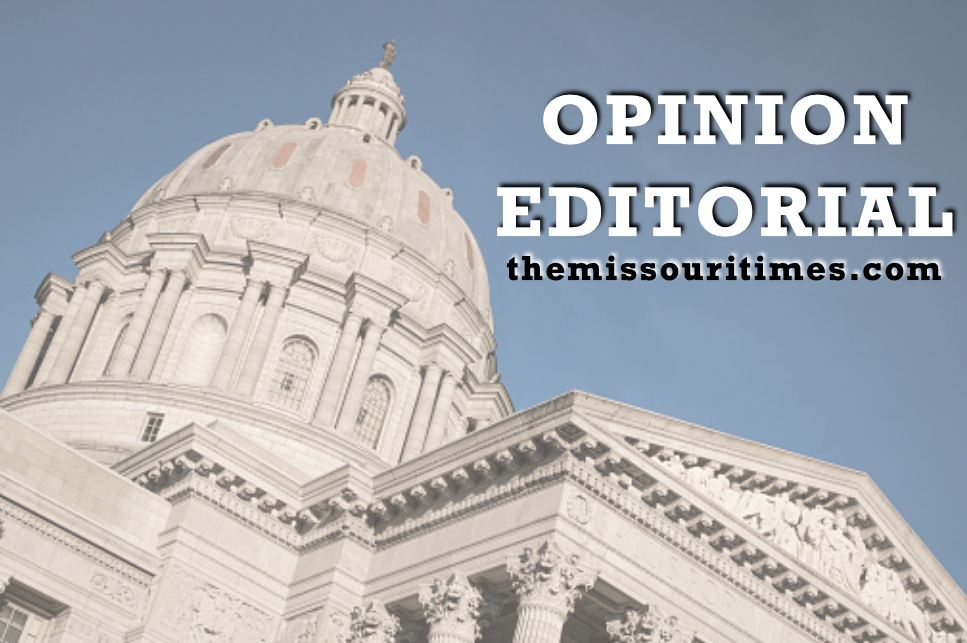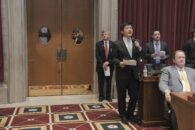Teachers across our state change lives every day and research shows their work and influence is the number one school-level factor in determining a student’s success, and yet we’re facing a workforce shortage crisis like nothing our schools have ever experienced or I have ever seen in the 10 years I’ve served on the State Board of Education or my 20 years as a member of the Missouri General Assembly. You’ve likely heard a number of education-related topics being discussed in the Capitol, on the news, or even at your family’s dinner table. But I doubt this issue – teacher recruitment and retention – is one of them. And yet, it is the most pressing issue facing schools across the state – and one we all must come together to address.
Missouri’s State Board of Education has formed a Teacher Recruitment and Retention Blue Ribbon Commission to address teacher recruitment and retention challenges in our state. The Blue Ribbon Commission is bringing together influential business leaders from across the state to study this important issue, as high-quality teachers are vital to ensuring our students grow into the next generation of Missouri’s workforce. It is refreshing to see our partners in business and industry realizing that their future employees will be directly impacted by this work, which makes these leaders eager to collaborate and problem-solve on behalf of public education in Missouri.
What schools are struggling with is both a recruitment and a retention issue. First, not enough people are studying to become teachers. In fact, the number of people enrolled in educator preparation programs across the state has declined nearly 30 percent over the last decade. At the same time, too many current teachers are leaving the profession. By their fifth year of teaching, over half of new teachers leave their career in education. It is a relatively simple supply and demand issue: the demand is high and there’s not enough supply to fill that void. But as simple as the problem is to understand, the solution is much more complex.
Teacher pay is one clear reason why we cannot attract more people to the profession, and also why so many choose to leave their career. Missouri is last in the nation in average starting teacher salary ($32,970), and 44th in the nation in average teacher salary ($50,817). Missouri has nearly 70,000 teachers, and just over 4,000 of them currently earn a salary between $25,000 and $35,000. As a state, we must address this longstanding issue and come up with practical, sustainable solutions to pay these public servants the salary they deserve – and we have to do it now.
But the solution to the teacher recruitment and retention challenges isn’t just about the monetary value we assign to this profession – it’s also about a different kind of value. It’s about the respect Missouri families show for their student’s teachers, and it’s about the support both our educational institutions and communities as a whole provide teachers while they fulfill this calling that is incredibly rewarding, but also incredibly taxing.
The Blue Ribbon Commission will present its recommendations to the State Board of Education in October; we’ve asked them to move quickly because we do not have time to waste. Unlike restaurants and shops that close when they do not have enough staff to operate and serve their customers, our public schools have to keep their doors open to continue serving Missouri students. But ongoing workforce shortages mean that schools are forced to hire long-term substitute teachers to provide instruction to students, or, in some cases, hire teachers who are not qualified to teach that subject/content or leave the position vacant. Missouri students deserve better.
That’s exactly why all Missourians should care about this issue and do what they can to help solve it – because without qualified, effective teachers in every classroom across our state, our students will not be prepared for success in school and in life, and in turn, our state will suffer. Public education and both workforce and economic development go hand-in-hand – and we must come together as a state to solve this problem. Supporting our students means supporting their teachers.

President of the Missouri State Board of Education and President and Chief Executive Officer of University Health in Kansas City








